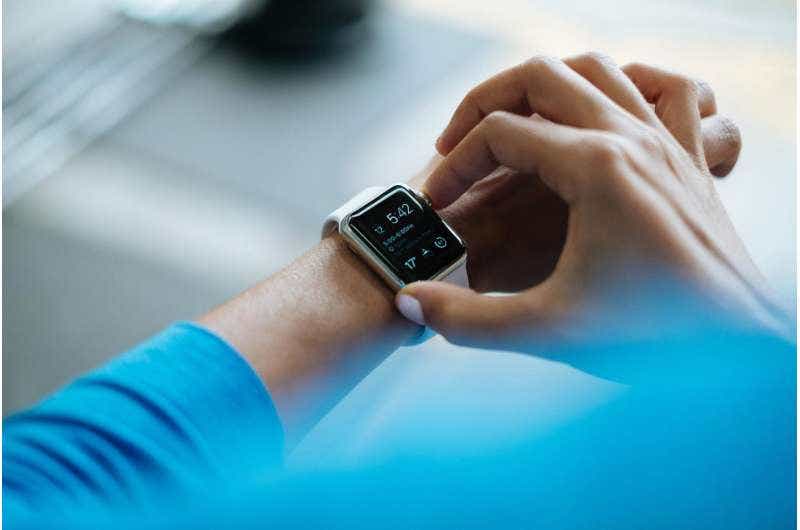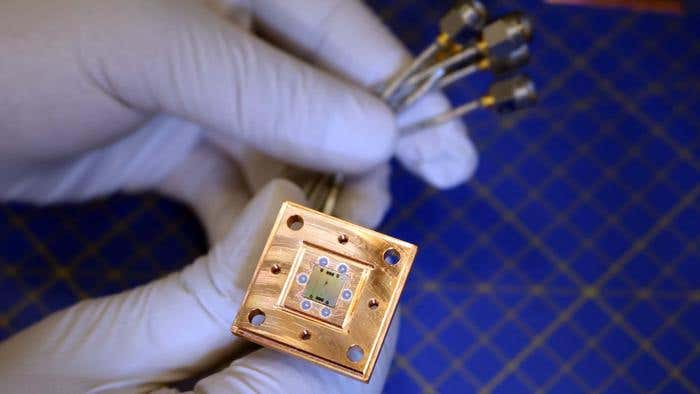Scientists can now track your circadian rhythms with a smartwatch
Smartwatches are handy devices for people to keep track of the number of steps they take per day or to track their mile time during a run

[August 3, 2021: University of Michigan]
Smartwatches are handy devices for people to keep track of the number of steps they take per day or to track their mile time during a run. But they are also opportunities for scientists to understand people's physiological processes while they are going about their everyday lives.
In particular, scientists have been interested in tracking people's circadian rhythms through the biological data gathered by their smartwatches—specifically, their heart rate. Doing so would allow individuals to know the best times of day to sleep, eat, exercise or take their medications.
At night, a person's heart rate lowers in order to conserve energy. During a person's waking period, their heart rate speeds up in anticipation of activity. But the challenge has been figuring out a way to find the throughline of a person's heart rate among all of the ways it varies throughout the day, says Daniel Forger, a professor of mathematics at the University of Michigan.
Now, Forger and his colleagues have developed a statistical method that accounts for all of the "noise" that might affect a person's heart rate and extracts a person's circadian rhythm based on heart rate data provided by their smart watch.
The circadian rhythm is an internal clock that synchronizes all of the physiological functions in the body. The master clock, located in the brain's hypothalamus, oversees all of the millions of other internal clocks in your body: Each cell has an internal clock, as does your heart, the liver and the brain. In healthy individuals, these clocks are all in synchrony. But studying this master clock is difficult—especially outside of a lab setting.
"I think a big question has been, can we measure circadian rhythms with wearables, and how can we do that?" said Forger, also a research professor of computational medicine and bioinformatics at Michigan Medicine. "Heart rate itself has a circadian rhythm, but it's complicated by a lot of different things: You lie down and go to sleep, and your heart rate drops. You go running and your heart rate goes way up.
"The hard question was, how do we pull out that internal timekeeping signal to know what time of day your body thinks it is from all of those other signals out there?"
The group's algorithm works by discarding data collected during sleep and focusing on data collected during a person's waking period. Then, the algorithm, developed by study co-author and former U-M postdoctoral researcher Clark Bowman, takes into account whether a person's heart rate is affected by the person's activity or cortisol because of exercise, posture or meals. The result is the underlying daily timekeeping signal controlling heart rate.
To test whether this statistical method worked, the group used a dataset from an ongoing study of medical interns, called the Intern Health Study. The study provides more than 130,000 days of data from 900 interns who continuously wore wrist-based sleep-tracking devices collecting motion and heart rate data. Medical interns are good subjects to use in this kind of research because they are shift workers, which means sometimes their work shifts change from day to night from week to week.
"Smart watches collect heart rate data using optical sensors, which aren't very accurate, and there are so many things affecting heart rate throughout the day that measurements tend to be all over the place, so it's a big result to be able to identify a circadian rhythm in that kind of data at all," said Bowman, now a professor of mathematics and statistics at Hamilton College.
"It's only possible since smart watches take measurements so frequently and provide information about activity to help account for cardiac demand. The sheer amount of data is just enough to see the background trend of heart rate subtly rising and falling in time with a circadian clock."
In one example in the study, a person's sleeping and waking patterns, as demonstrated by their heart rate, adjust quickly to their changing work schedule. This means their circadian rhythm was able to quickly adjust to a bedtime and waking time that was almost opposite of what they had previously been experiencing.
Another individual's data, however, showed a different story. Their circadian rhythm lagged behind their adjusted sleep schedule, which likely means they were feeling pretty sluggish during the time they were adjusting to their new waking schedule.
This sluggishness is the same effect that those with jet lag experience. Jet lag can occur when a person's heart rate isn't in sync with their waking period. A slower heart rate can make a person feel sleepy or sluggish.
Forger says the strength of using data from wearables means scientists, as well as the person wearing the watch, can study a person's circadian rhythm based on real-world influences, which has certain advantages over measuring circadian rhythm in a lab. The gold standard clinical study to study circadian rhythm would be to measure a person's melatonin levels over a period of six to 40 hours in a dark lab.
"We've shown that you can take a wearable signal and directly measure circadian rhythms in the real world, and the real world has so many things that affect circadian rhythms that you aren't going to measure in the lab," Forger said, explaining that some of the data the team has had to account for are extended periods of intense activity (a semiprofessional cyclist, for example). The method also does not account for effects on heart rate such as caffeine, psychological stress, pharmaceuticals and disease.
"There are some scenarios that you have to always be a little more careful with, using real world data," he said. "But again we're going to pick up other things you may not experience in a lab."
The researchers also developed the Social Rhythms app, available for iPhone and Android devices, where you can upload your wearable data and receive a report on how your internal circadian clock has changed recently.
"Measuring that signal not only provides information about the body's circadian timing, but also characterizes how each individual's heart rate behaves," Bowman said. "We can use this information to track how the body adjusts to new schedules, study how physical activity affects each individual's heart rate slightly differently, and even quantify the effect of being active at different times of day on the body's internal clock.
"Smart watch users could have real-time information on their circadian clock to help adjust to jet lag or shift work, manage circadian disorders or identify abnormalities in heart rate which might present health risks."
Like these kind of feel good stories? Get the Brighter Side of News' newsletter.
Tags: #New_Innovations, #Mobile_App, #Smartwatch, #Heart_News, #The_Brighter_Side_of_News
Joshua Shavit
Science & Technology Writer | AI and Robotics Reporter
Joshua Shavit is a Los Angeles-based science and technology writer with a passion for exploring the breakthroughs shaping the future. As a contributor to The Brighter Side of News, he focuses on positive and transformative advancements in AI, technology, physics, engineering, robotics and space science. Joshua is currently working towards a Bachelor of Science in Business Administration at the University of California, Berkeley. He combines his academic background with a talent for storytelling, making complex scientific discoveries engaging and accessible. His work highlights the innovators behind the ideas, bringing readers closer to the people driving progress.



